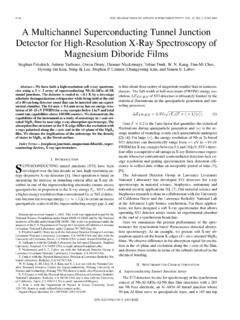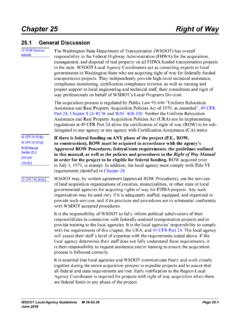Transcription of Operating Manual for the Olympus BX51 - Chemistry
1 Operating Manual for the Olympus BX51. Brightfield .. 1. Fluorescence .. 3. Phase Contrast 5. Nomarski Differential Interference Contrast (DIC) 7. Simultaneous Fluorescence and Phase Contrast .. 9. Simultaneous Fluorescence and DIC .. 11. Polarized Light 13. APPENDIX 1: Outline Olympus BX51 Microscope .. 15. Operating Manual for the Olympus BX51. BRIGHTFIELD. 1. Remove the microscope cover. 2. Turn on the halogen light switch (1) for transmitted light to I (ON). 3. Check the light path. The light path selector knob (2) should be pushed in all the way. 4. Adjust the light intensity using the brightness adjustment knob (3).
2 The numerals to the right of the lamp voltage indicator LEDs (4) indicate the voltage. 5. Adjust the interpupillar distance. While looking through the eyepieces, adjust oculars (5). until the left and right fields of view coincide completely. 6. Make sure the 10x objective (6) is in place. 7. Place the slide with your specimen on the stage (7) and hold it with the specimen holder (8). 8. Find your specimen using the stage controls (9). 9. Focus specimen using fine/course focussing knobs (10). 10. Adjust the diopter: - Close your left eye and focus on the specimen using the fine focus knob.
3 - Close your right eye and focus on the specimen using the diopter ring (11) on the left ocular. - Open both eyes and confirm that the focus is comfortable. 11. If desired switch to the next objective by rotating the nosepiece (12) and focus. Continue until you reach the desired magnification. 12. Establish Koehler illumination: - Close field iris diaphragm (13) until you can see the edges. - Focus the image of the field iris diaphragm by raising or lowering the condenser using the condenser height adjustment knob (14). - Check if the circle of light is centered in the field of view.
4 If not, use the two condenser centering screws (15) to move the field iris diaphragm image to the center of the field of view. - Open the field iris diaphragm until its image circumscribes the field of view. - Match the opening of the condenser aperture iris diaphragm (16) with the of the objective in use in order to achieve the optimum objective performance. NOTE: Most specimen are usually low in contrast, reducing the diaphragm opening to 70%-80% of the value of the respective objective will generally provide an image of acceptable quality. To check the opening.
5 A) remove one ocular and look down the tube, b) adjust the condenser iris so that 80% of the field is light, c) replace the ocular, or a) set condenser aperture iris scale to about 80% of the value of objective, b) example: of objective is , set the scale to x = 1. 13. Examine specimen and document image if necessary: - If using 35mm film, use checklist for Olympus 35mm Camera'. - To obtain still digitized images, use checklist for Polaroid Digital Microscope Camera (DMC). - To obtain still digitized images and digitized movies, use checklist for Sony, color Video camera'.
6 14. When finished: - Lower the stage by turning the focus knob (10) towards you and remove the slide with your specimen from the stage (7). - Turn the nosepiece (12) back until the 10x objective is into place. - If the100x objective was used, clean the lens carefully with lens paper ONLY (do not use Kimwhipes). - Turn the light intensity down using the brightness adjustment knob (3). - Turn off the halogen light switch (1) to 0 (OFF). - Cover the microscope. - Leave the room CLEAN and TIDY! 2. FLUORESCENCE. 1. Remove the microscope cover. 2. To turn on the mercury bulb, set the main switch (18) on the Power Supply Unit to I (ON).
7 The light indicator (19) on the Power Supply Unit should go ON. Wait 5 to 10 minutes for the mercury bulb to stabilize. The mercury bulb should stay on for at least 15 minutes before turning off. 3. Setup microscope for brightfield imaging (see instructions on Brightfield' page 1, # 2-12). 4. Engage the fluorescence mirror unit (17) until the proper filter cube is in place: - WU #1, dichroic mirror DM400, excitation filter BP330-385, barrier filter BA420. - WB #2, dichroic mirror DM500, excitation filter BP450-480, barrier filter BA515. - WG #3, dichroic mirror DM570, excitation filter BP510-550, barrier filter BA590.
8 5. Turn the light intensity down all the way using the brightness adjustment knob (3). 6. To allow light from the mercury bulb to reach the specimen, slide the shutter knob (20) to position marked . 7. To improve image contrast and to prevent color fading of fluorescent light in other part than observed region, pull out the field iris diaphragm knob (21) so that the image of the field iris diaphragm just circumscribes the field of view. 8. To help adjusting the brightness of you the observed image and to improve the contrast, pull out the aperture iris diaphragm knob (22), the aperture iris diaphragm will get smaller.
9 9. Examine specimen and document image if necessary: - If using 35mm film, use checklist for Olympus 35mm Camera'. - To obtain still digitized images, use checklist for Polaroid Digital Microscope Camera (DMC). - To obtain still digitized images and digitized movies, use checklist for Sony, color Video camera'. 10. To avoid bleaching, slide the shutter knob (20) to the position marked whenever you are not observing the specimen. 11. When finished: - Slide the shutter knob (20) to the position marked . - If mercury bulb has burned for at least 15 minutes, turn off the mercury bulb by setting the main switch (18) on the Power Supply Unit to O (OFF).
10 The light indicator (19) on the Power Supply Unit should go out. NOTE: The mercury bulb needs to cool down for at least 15 minutes before turning back on. - Lower the stage by turning the focus knob (10) towards you and remove the slide with your specimen from the stage (7). - Turn the nosepiece (12) back until the 10x objective is into place. - If the100x objective was used, clean the lens carefully with lens paper ONLY (do not use Kimwhipes). - Push the field iris diaphragm knob (21) and the aperture iris diaphragm knob (22) al the way back into the microscope.







